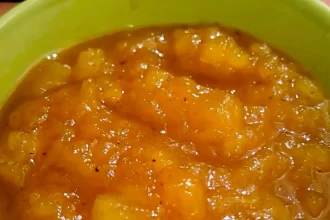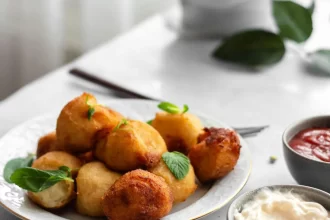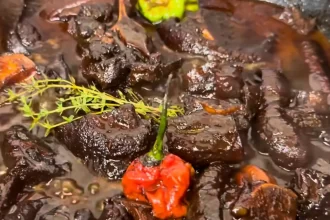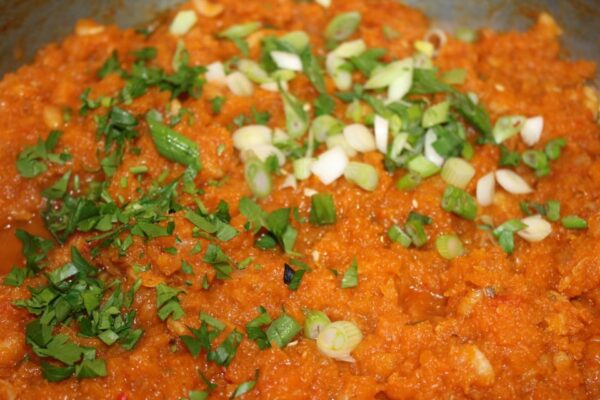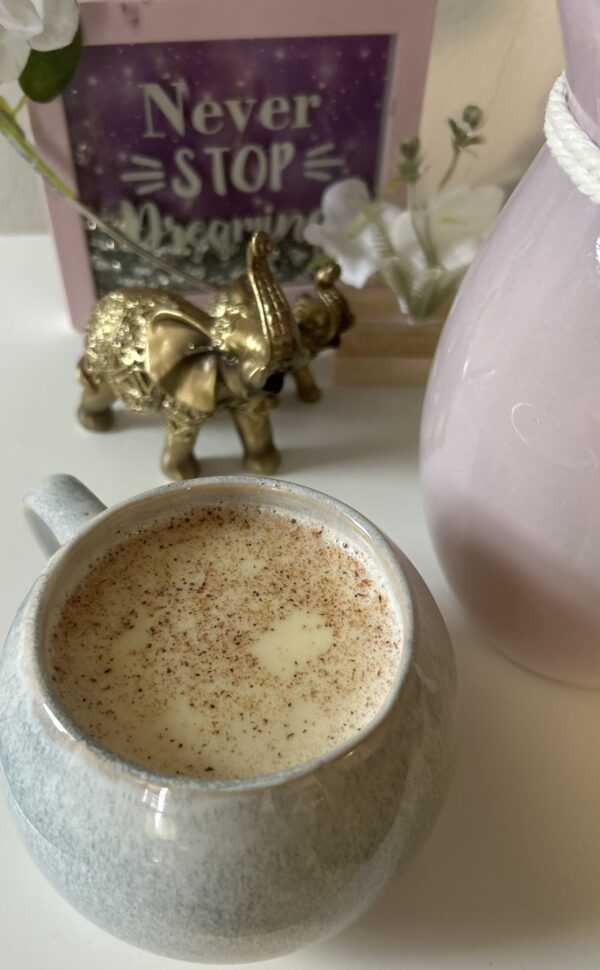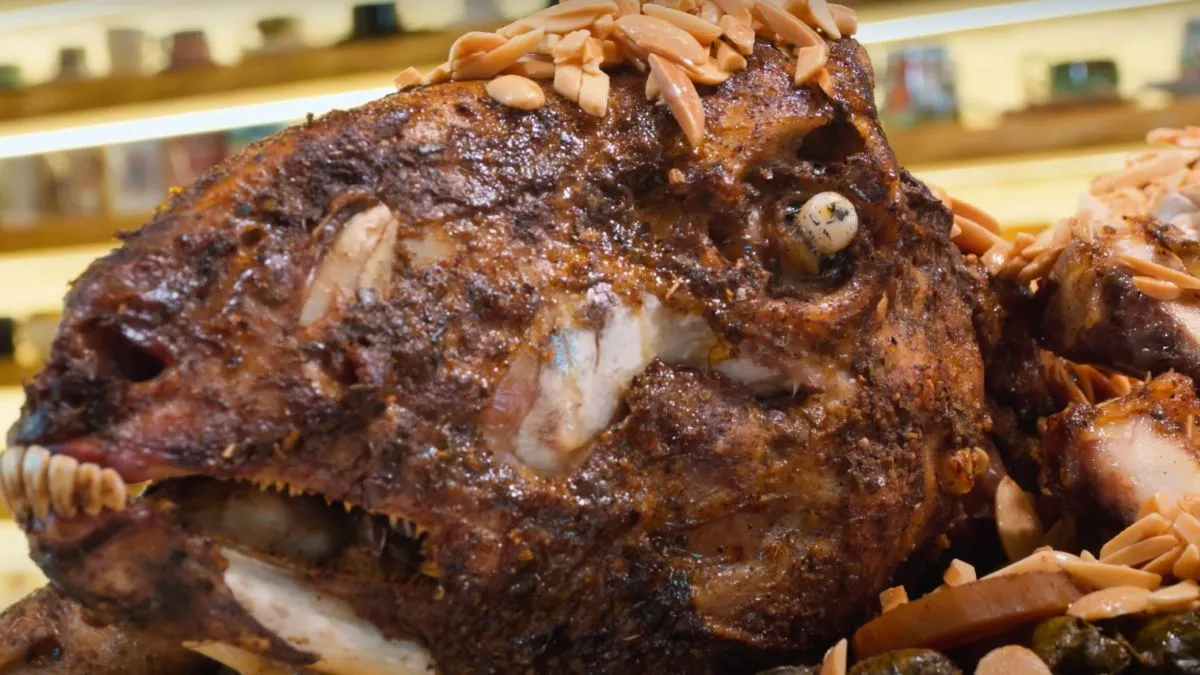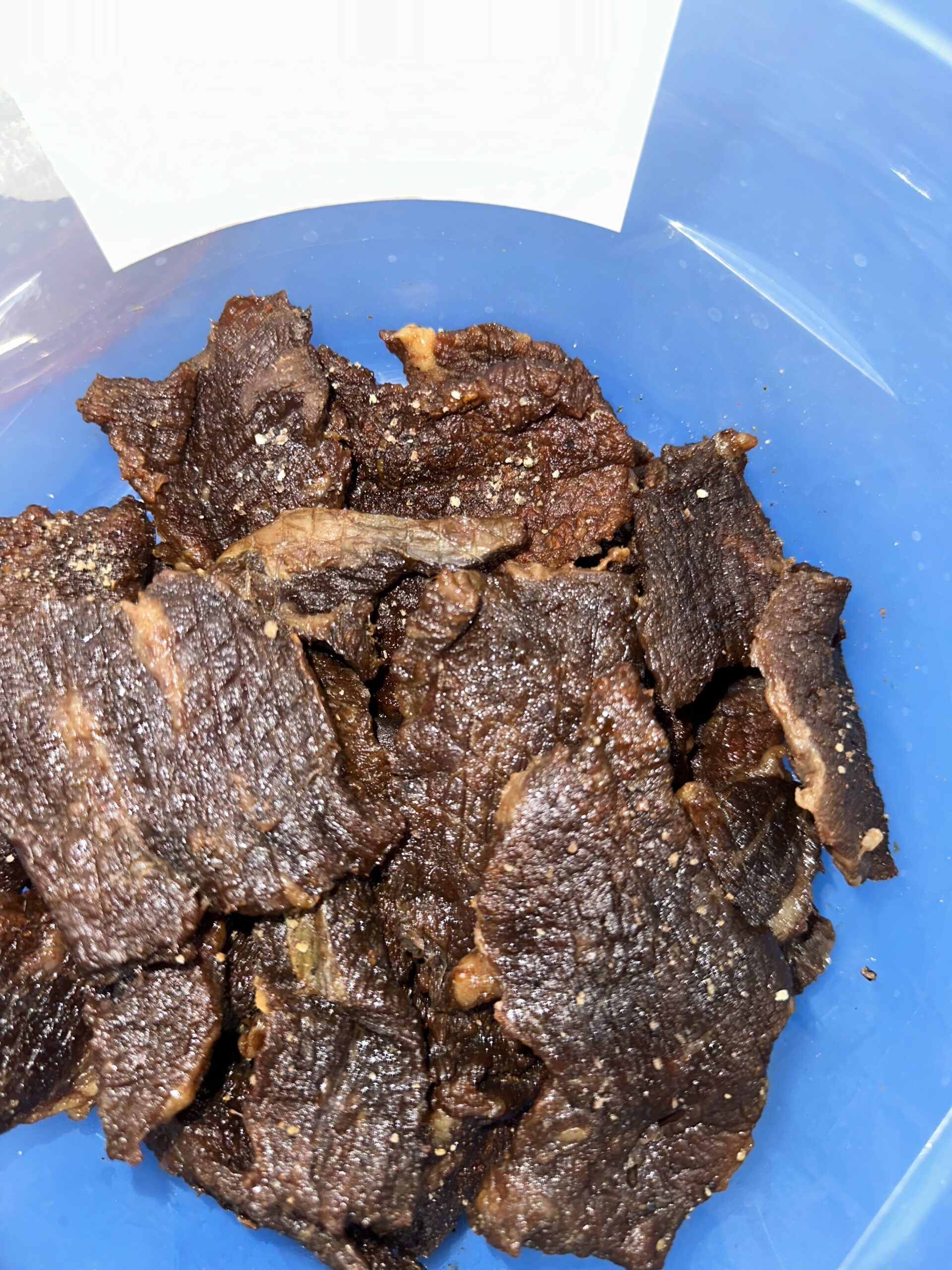Buss Up Shut, Paratha, or Oil Roti
Today, we’re diving into a staple of Guyanese cuisine – Oil Roti! This fluffy, buttery flatbread is a must-have for soaking up all the delicious curries and stews. Ready to get your hands floured up? Let’s roll!
Roti, also known as “paratha,” is a beloved flatbread in Caribbean cuisine, made using simple ingredients: flour, salt, water, baking powder, and oil (or other fats). The oil is kneaded into the dough, which is then rolled out thin and cooked on a hot cast-iron skillet. This versatile bread has many variations across the Caribbean, with each person having their unique twist on the recipe.
The Art of Oil Roti
The secret to mastering oil roti lies more in the technique than in the ingredients. Key steps include not over-kneading the dough, letting it rest properly, and creating enough layers to form air pockets by oiling and rolling it into dough balls. Another crucial step is “clapping” the roti while it’s hot.
Clapping is a traditional Guyanese method where the cooked roti is tossed and clapped between hands to release the air pockets, creating a flaky texture. However, this can be quite the hand-burner! These days, a safer alternative involves placing the hot roti between two bowls and shaking them vigorously to achieve the same effect without the risk of burns.
Using these techniques, you’ll get that perfect flaky, airy roti every time!
Expert Tips for Perfect Roti
1. Dough Preparation:
– Avoid over-kneading the dough to maintain a soft texture.
– Allow the dough to rest for at least 45 minutes to improve elasticity.
– Incorporate oil into the dough for added flakiness.
2. Rolling and Cooking:
– Roll the dough thinly to achieve the desired flakiness.
– Cook roti on a medium-heated skillet or tawah for even cooking.
– Brush with oil or ghee while cooking to enhance flavor and texture.
3. Clapping Technique:
– To release air pockets and create flakiness, clap the roti immediately after cooking.
– Alternatively, use the bowl-shaking method to avoid burning your hands.
4. Serving Suggestions:
– Serve roti with a variety of curries, stews, or sautéed vegetables for a complete meal.
– Experiment with different fillings and accompaniments to suit your taste preferences.
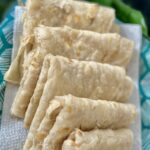
Oil “Paratha” Roti
Ingredients
- 3 ½ cups all-purpose flour
- 1 tsp baking powder
- 1 tsp salt
- 1 cup water
- ½ cup oil for dough and cooking
Instructions
- Start by sifting together the flour, baking powder, and salt in a large mixing bowl.
- Gradually add water to the dry ingredients, kneading until a smooth dough forms. Be careful not to over-knead, as this can result in tough roti.
- Rub some oil over the dough ball and cover it with a damp paper towel. Let it rest for at least 45 minutes to improve elasticity.
- Divide the dough into small balls, roughly the size of an orange, and flatten slightly with your fingers.
- Dust your work surface with flour and roll out each dough ball into a thin circle, about ⅛ inch thick.
- Brush the rolled-out dough with oil or melted ghee, then roll it into a log to create layers.
- Cover the rolled dough with a damp paper towel and let it rest for another 20 minutes.
- Heat a skillet or tawah over medium heat and cook the roti until bubbles form on the surface, then flip and cook the other side.
- Place the oil roti in a large bowl with a lid and shake the heck out of it. Or toss the roti in the air and clap it with both hands repeatedly.
- Serve warm.
Nutrition
Top Roti Questions Answered
How do I make soft roti?
To ensure your roti turns out soft, avoid over-kneading the dough, allow it to rest adequately, and ensure it’s cooked on medium heat.
What’s the difference between roti and naan?
Roti is typically unleavened and thinner, while naan is leavened with yeast or baking powder, resulting in a thicker, softer texture.
Can I freeze roti dough?
Yes, you can freeze roti dough. Portion it into balls, wrap tightly in plastic wrap, and store in a freezer bag. Thaw in the refrigerator before using.
What are some traditional roti fillings?
Traditional roti fillings include curried meats (such as chicken, goat, or beef), vegetables, potatoes, and chickpeas.
Do you have a recipe for whole wheat roti?
Yes, you can substitute whole wheat flour for all-purpose flour in most roti recipes. Just be mindful that whole wheat flour may result in a slightly denser texture.
How do I roll out roti dough evenly?
Start by flattening the dough with your fingers, then use a rolling pin to roll it out gradually, turning it occasionally to maintain an even thickness.
Can I make roti without a tawa?
While a tawa (flat iron skillet) is traditional, you can use a heavy-bottomed pan or even a griddle to cook roti.
What’s the best way to reheat leftover roti?
Reheat roti in a dry skillet over medium heat or in the microwave wrapped in a damp paper towel for a few seconds.
Do you have any tips for making gluten-free roti?
For gluten-free roti, substitute wheat flour with a gluten-free flour blend and ensure all other ingredients are gluten-free.
What’s the origin of roti?
Roti originated in the Indian subcontinent and has since spread to various regions, including the Caribbean, where it has been adapted into local cuisines.



